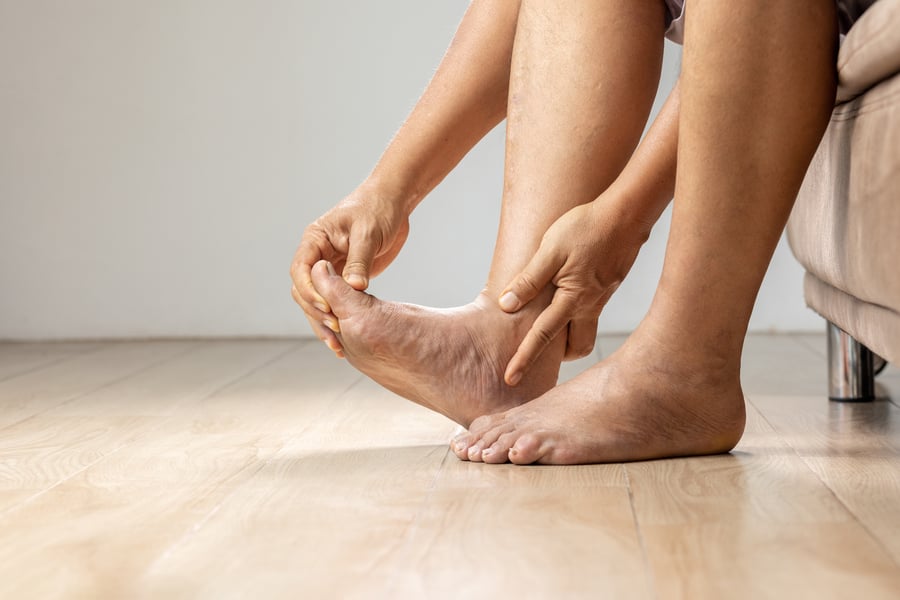Bone Bruise or Something Worse? When to Worry & What to Do

If you've recently bumped, twisted, or landed hard on your foot and you're still dealing with pain or swelling days later, you might be wondering: is it just a bruise—or could it be something more serious? While many foot injuries are minor, others, like bone bruises, can linger and even lead to complications if left untreated. Here's what you need to know to tell the difference and decide when it's time to see a specialist.
What Is a Bone Bruise?
A bone bruise (also called a bone contusion) is an injury to the bone that’s more serious than a typical bruise but less severe than a fracture. When you suffer a direct impact or forceful injury, tiny blood vessels in the bone can break, causing bleeding and swelling inside the bone tissue.
Unlike surface bruises that show up as black and blue marks on your skin, a bone bruise is deeper. It doesn't always come with visible signs, but it can still be quite painful.
Common Causes of Bone Bruises in the Foot
Bone bruises in the foot often result from high-impact injuries, such as:
- A direct blow to the foot (like dropping something heavy on it)
- Twisting injuries during sports or exercise
- Falls from a height or awkward landings
- Repetitive stress, especially in runners or athletes
Because the foot has many small bones and takes on a lot of weight and motion, it's especially vulnerable to these types of injuries.
Bone Bruise or Something More?
So how do you know if your foot injury is just a bruise, or a sign of something more serious, like a stress fracture or soft tissue damage?
Bone bruises and fractures can feel very similar. Both may cause:
- Persistent pain and tenderness
- Swelling
- Difficulty walking or putting weight on the foot
However, fractures often cause sharper, more localized pain and may come with an obvious deformity. Sprains or ligament injuries tend to cause more instability in the joint.
Still, the only way to know for sure is to see a doctor. Even trained professionals need imaging studies like X-rays or MRIs to make an accurate diagnosis.
Symptoms That May Signal Something More Serious
If you’re not sure whether your foot injury needs medical attention, watch for these red flags:
- Pain that doesn’t improve after several days of rest and ice
- Swelling that increases or doesn’t go down
- Bruising that worsens or spreads
- Difficulty bearing weight or limping
- Numbness or tingling in your foot or toes
- A visible bump or deformity in the foot structure
Any of these symptoms could point to a more serious foot injury that needs professional evaluation.
Rest, Ice, and Monitor - Or Time to See a Doctor?
For mild pain or swelling, the R.I.C.E. method (Rest, Ice, Compression, Elevation) is a good place to start. Take a break from physical activity, keep weight off your foot, and apply ice for 15–20 minutes a few times a day.
But if you’ve been doing all of that and the pain isn’t improving (or if it’s getting worse) it’s time to get it checked out.
How Foot Specialists Diagnose Bone Bruises
A podiatrist or foot and ankle specialist will start with a physical exam and ask questions about how the injury happened. They may check your range of motion and press on different parts of your foot to pinpoint pain.
Since bone bruises don’t show up on standard X-rays, your provider may recommend an MRI, which gives a detailed image of soft tissues and bone marrow to help confirm the diagnosis.
Getting the right diagnosis early is key to avoiding long-term complications.
Treatment Options and Healing Timeline
The good news: most bone bruises heal with conservative care. Your treatment plan might include:
- Rest and activity modification
- Ice and elevation to reduce swelling
- Anti-inflammatory medication (if appropriate)
- Temporary use of crutches or a walking boot
- Follow-up imaging if needed
Healing typically takes a few weeks to a few months, depending on the severity of the injury and your overall health.
Why the Right Diagnosis Matters
Ignoring a bone bruise or mistaking it for a minor injury can delay healing, or lead to further damage. In some cases, continued pressure on an injured foot can turn a bone bruise into a more serious stress fracture or joint issue.
That’s why it’s so important to see a foot specialist if your symptoms don’t improve with rest. The sooner you get the right diagnosis, the sooner you can get back on your feet safely.
Don’t Guess. Get Answers.
If you’ve injured your foot and aren’t sure what you’re dealing with, don’t wait and hope it gets better on its own. Schedule a consultation with Dr. Sweeney to get expert care and a treatment plan tailored to your needs.






